Addison's Disease Skin Discoloration
Addison's disease skin discoloration. Mucous membranes in the mouth and nose. This hyperpigmentation in the mouth is a symptom which is specific to Addisons disease. The areola or area around the nipples the mucous membranes in the mouth including the lips and the vagina and rectum.
Certain health conditions can cause changes to a persons skin color such as hypopigmentation which is the whitening or lightening of the skin or hyperpigmentation the darkening of the skin. In addition to skin discoloration women with primary Addison disease may lose their pubic and underarm hair. There are several Addisons disease symptoms which include.
The appearance of dark patches on the skin is a common symptom of Addisons disease. Addisons disease can affect the skin and cause hyperpigmentation. Addisons disease causes dark pigmentation called hyperpigmentation on the skin as well as inside the mouth.
Addisons Disorder Addisons disorder is the rarely known cause that can cause hyperpigmentation on the skin areas. Acanthosis nigricans is a medical sign characterised by brown-to-black poorly defined velvety hyperpigmentation of the skin. Often those areas can appear shiny.
Addisons disease also known as chronic adrenal insufficiency or hypocortisolism is a rare endocrine disorder. Skin discoloration can affect large or small areas of skin and it can be a natural part of aging or the sign of an underlying condition that needs medical attention. This is because androgens the hormones responsible for that hair growth are made in the adrenals.
The discoloration develops over a variety of areas including. Hyperpigmentation representing an accentuation of normal pigmentation of the hand of a patient with Addisons disease left. Virtually all patients with acromegaly have acral and soft tissue overgrowth with characteristic findings like macrognathia and enlarged hands and feet.
When skin color changes occur in a child pediatricians should think of hyperpigmentation as a presenting sign of adrenal insufficiency. Pictured is the hand of a person suffering from Addisons associated hyperpigmentation alongside the hand of a person who does not have the condition but who comes from a similar ethnic background.
Acanthosis nigricans is a medical sign characterised by brown-to-black poorly defined velvety hyperpigmentation of the skin.
Hyperpigmentation representing an accentuation of normal pigmentation of the hand of a patient with Addisons disease left. Acanthosis nigricans is a medical sign characterised by brown-to-black poorly defined velvety hyperpigmentation of the skin. The hair loss does not happen in men because their testes make androgens as well. The MSH is known to over-stimulate melanin-producing cells. This is mainly caused due to overproduction of the Melanocyte-Stimulating Hormone MSH. Hyperpigmentation of the skin and mucous membranes often. Pictured is the hand of a person suffering from Addisons associated hyperpigmentation alongside the hand of a person who does not have the condition but who comes from a similar ethnic background. Addisons disease also known as chronic adrenal insufficiency or hypocortisolism is a rare endocrine disorder. Often those areas can appear shiny.
The areola or area around the nipples the mucous membranes in the mouth including the lips and the vagina and rectum. Hyperpigmentation of the skin and mucous membranes often. It is estimated that it affects about 1 to 2 in 100000 people. Discoloration In addition to skin bronzing Addisons disease causes other changes in the distribution of skin pigment. Skin discoloration can affect large or small areas of skin and it can be a natural part of aging or the sign of an underlying condition that needs medical attention. There are several Addisons disease symptoms which include. Hyperpigmentation representing an accentuation of normal pigmentation of the hand of a patient with Addisons disease left.


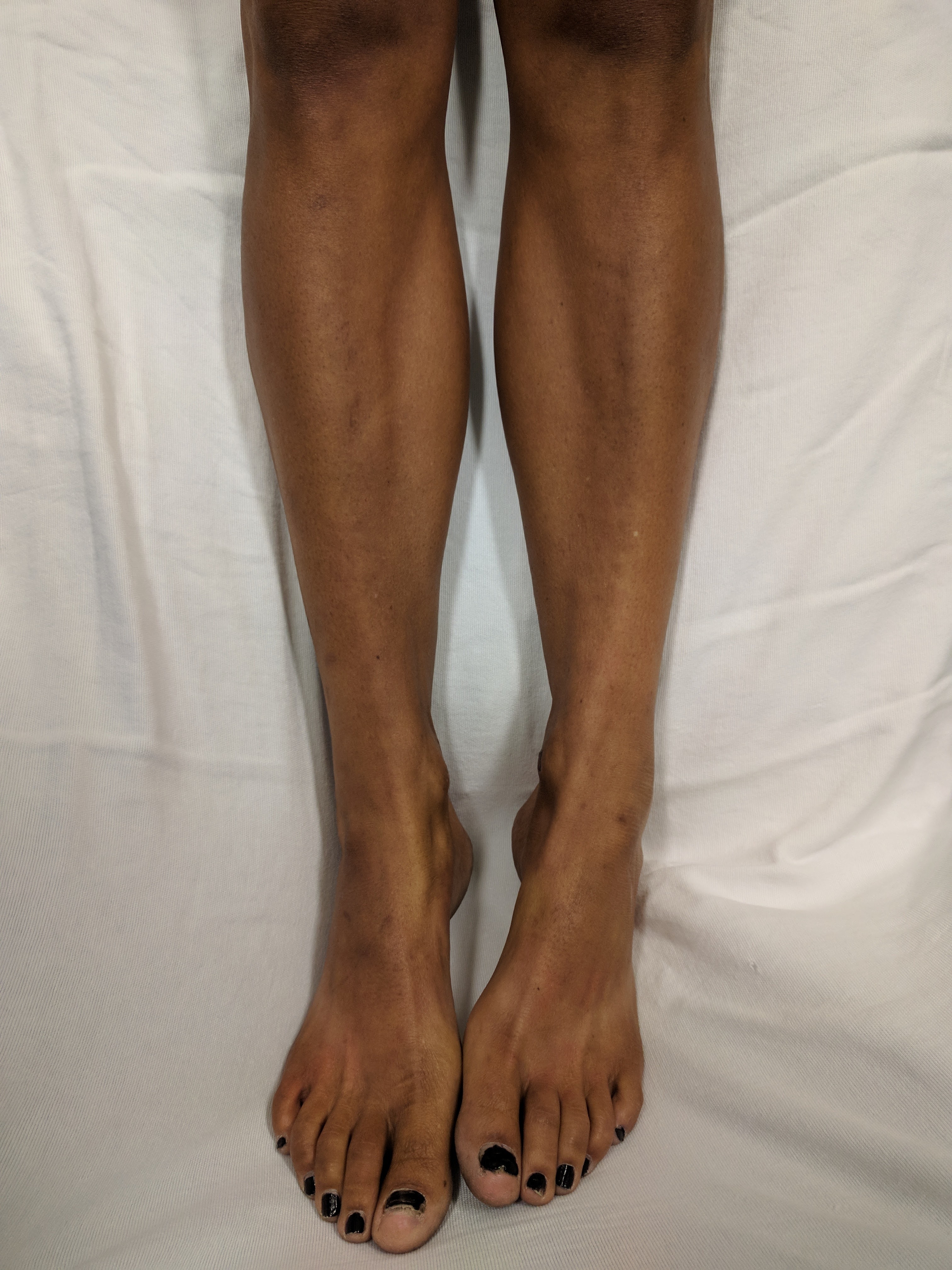


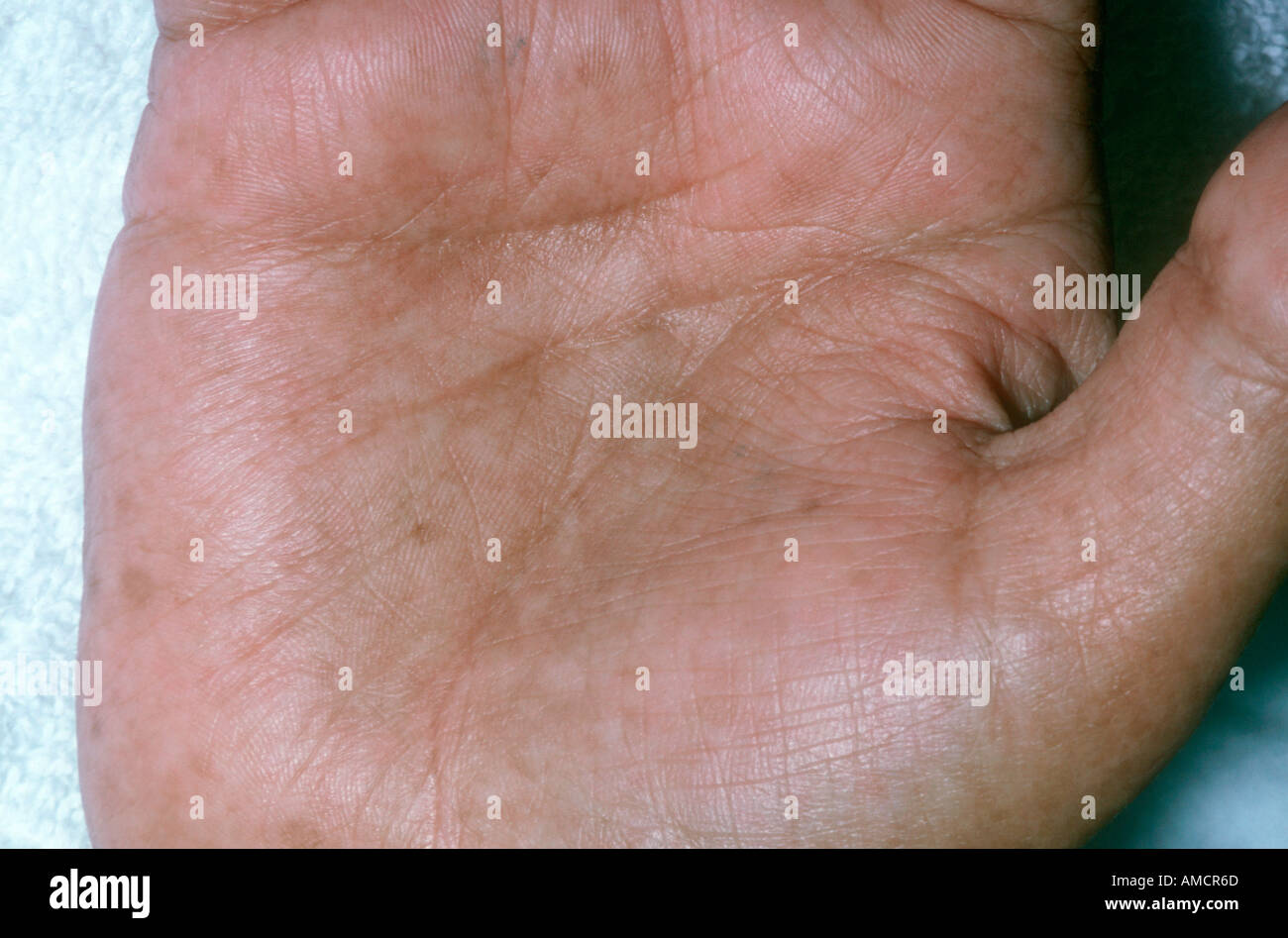
/addisons-disease-symptoms-cause-diagnosis-treatment-4172782_FINAL-5c4550a546e0fb0001420c10.png)






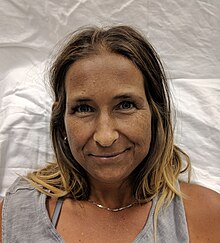
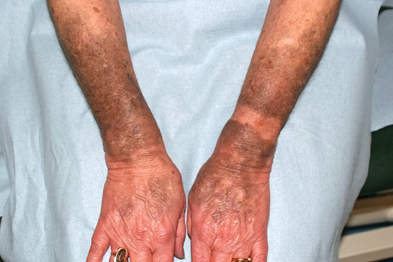


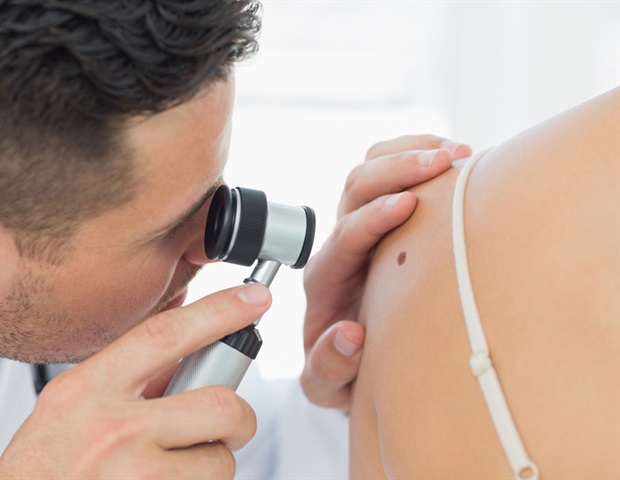
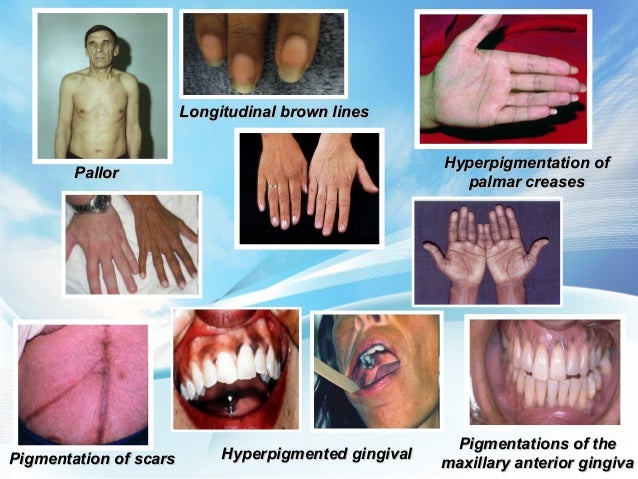


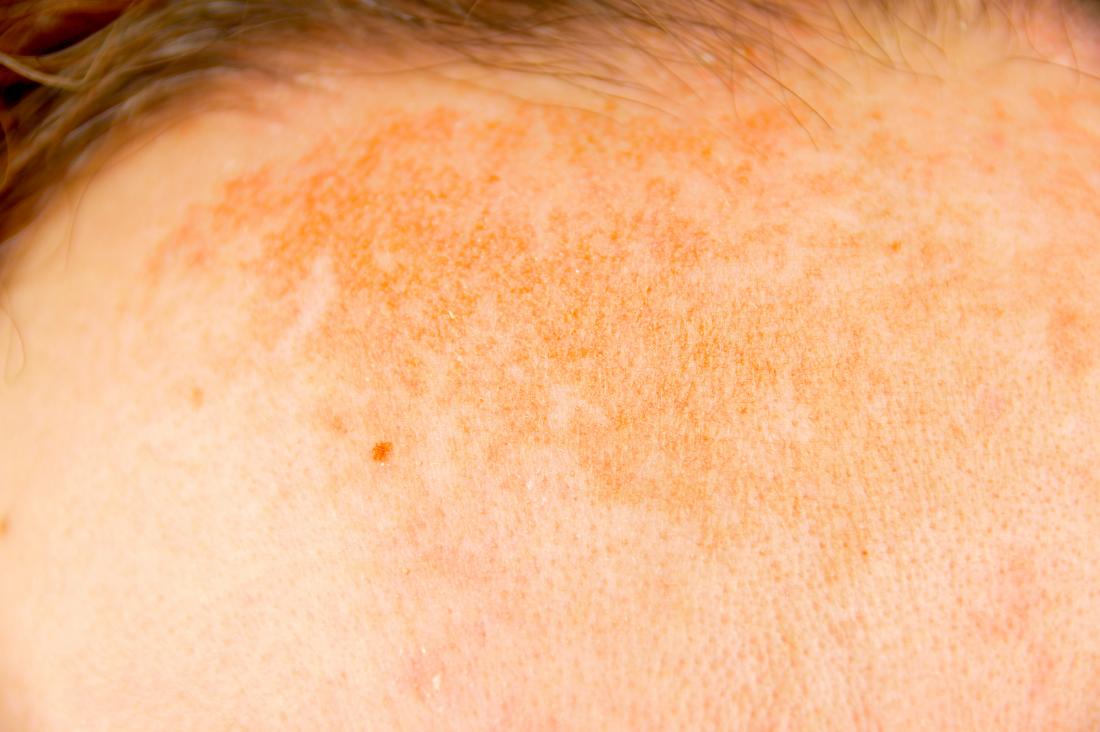


:max_bytes(150000):strip_icc()/GettyImages-1176722103-894bbbb89c8e4bcd977a16297e2336bf.jpg)

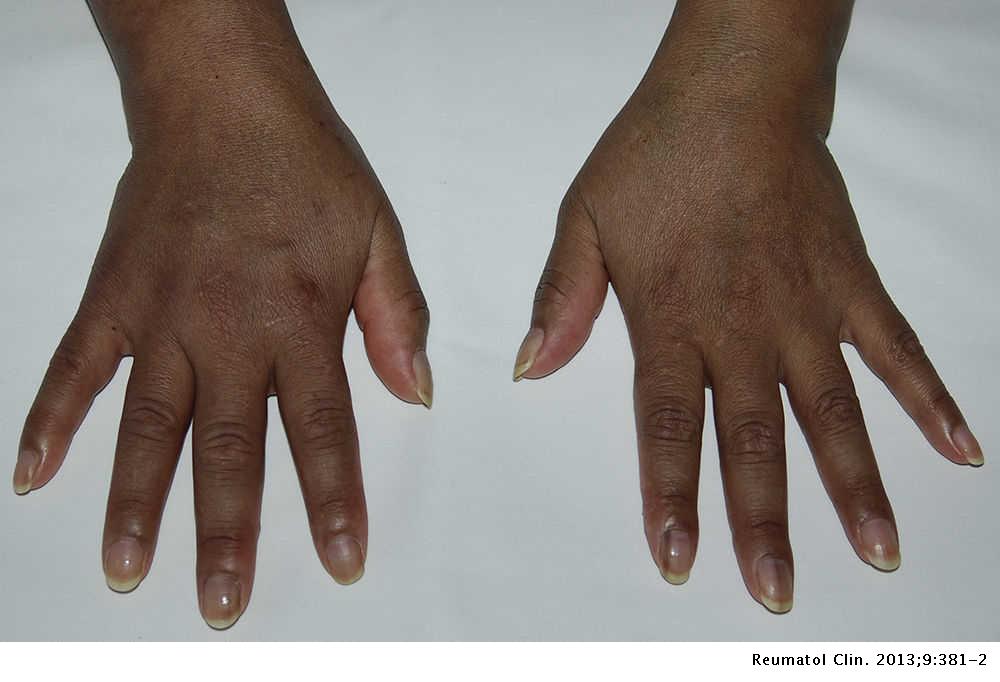








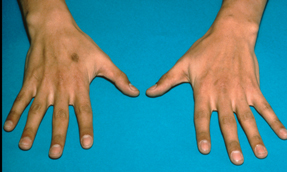

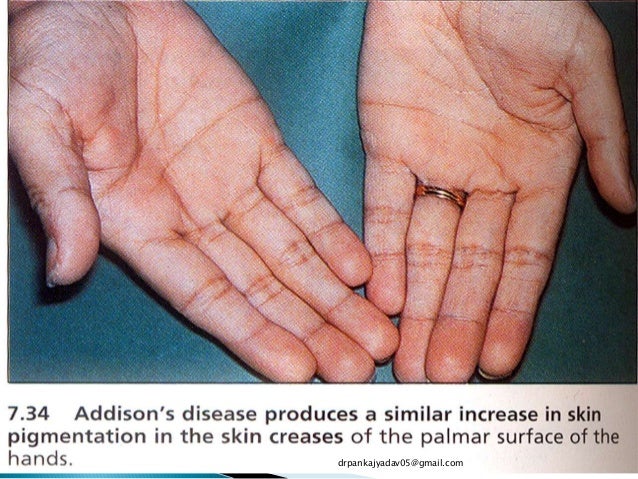

Post a Comment for "Addison's Disease Skin Discoloration"